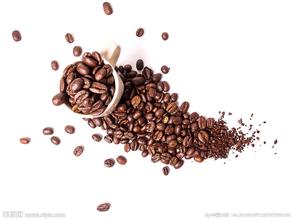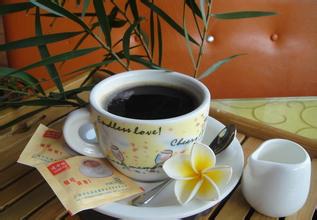Introduction to the method of describing the flavor of coffee beans treated by Santa Redica Pacamami in El Salvador
El Santa Redi Capa Camara Honey Treated Coffee Bean Flavor Description Processing Variety Introduction
El Salvador is one of the small countries in Central America and has a very dense population. Its coffee flavor is characterized by excellent balance.
Today, this coffee accounts for 40% of the country's exports. The best quality coffee is exported to Germany from January to March after 35% of the extra hard beans.
In the early 1990s, guerrilla warfare greatly damaged the country's national economy, reducing coffee production from 3.5 million bags in the early 1970s to 2.5 million bags in 1990 - 1991. The eastern part of the country was most affected by guerrilla warfare, and many farmers and workers were forced to leave their estates. The shortage of funds has caused coffee production to plummet, from 1200 kilograms per hectare in the past to less than 900 kilograms per hectare today. In addition, in 1986 the Government imposed an additional 15 per cent duty on coffee exports, i.e. 15 per cent on top of the existing 30 per cent tax. Taxes, combined with unfavourable exchange rates, severely reduced coffee exports and, with them, quality.
The government finally realized the huge role of coffee in the national economy, such as employment, foreign exchange and agricultural development, so it privatized part of the coffee export industry in 1990, hoping to increase the yield of coffee in the export market.
Salvadoran coffee is a Central American specialty, light, aromatic, pure and slightly acidic. Like Guatemala and Costa Rica, coffee in El Salvador is graded according to altitude, with the higher the altitude, the better the coffee. The best brand is Pipil, the Aztec Mayan name for coffee, which has been approved by the Organic Certified Institute of America. Another rare coffee is Pacamara, a hybrid of Pacas and Maragogype. The coffee is best grown in western El Salvador, adjacent to Santa Ana, near the border with Guatemala. El Salvador is one of the small Central American countries with a very dense population. Its coffee flavor is characterized by excellent balance
The so-called honey treatment, not coffee beans in the process of honey added, nor does it mean that coffee must have the taste of honey, but refers to the color of coffee beans in the drying process looks like the color of honey, because the degree of treatment is different,"honey" The degree is also different, about we can divide it into yellow honey treatment, red honey treatment and black honey treatment.
Why do you have different degrees of "honey"? First of all, we have to recall that after coffee cherries are picked, they will be removed from the pulp to obtain the coffee seeds inside. After drying and shelling, they are coffee beans. In the process of removing the pulp, the washing method does not retain the pulp, and after fermentation and washing, it is dried, and after drying, the coffee beans are peeled. However, honey treatment retains part of the pulp for drying. In the drying process, due to the different number of pulp retained, the color is different. The more pulp retained, the darker the color. In general, yellow honey treatment retains 30-40% of the pulp, red honey treatment retains 50-60% of the pulp, and black honey treatment retains 70-80% of the pulp. What if there's more? That's the sun treatment method without removing the pulp directly.

Important Notice :
前街咖啡 FrontStreet Coffee has moved to new addredd:
FrontStreet Coffee Address: 315,Donghua East Road,GuangZhou
Tel:020 38364473
- Prev

Flavor description of Honduran coffee beans introduction to the grinding scale of taste characteristics of varieties
The flavor description method of Honduran coffee beans the taste characteristics of varieties grinding scale introduction the extremely balanced characteristics of Honduran coffee makes it widely used. Can be used to mix coffee, can also be used as a single product to brew, mixed with Honduran coffee Italian concentrate will have a surprising effect. Although in troubled times, coffee can also grow its own wonderful, it is not difficult to understand
- Next

Introduction to the flavor description and processing method of Brazilian Huangbo single coffee bean price manor region
Brazil is located in the Latin American region of the Western Hemisphere, in the eastern part of South America and on the west coast of the Atlantic Ocean. Brazil is bordered by all countries on the South American continent except Ecuador and Chile. Most of its territory lies between the equator and the Tropic of Cancer and is the most tropical country in the world. Within the territory 1x3
Related
- Detailed explanation of Jadeite planting Land in Panamanian Jadeite Manor introduction to the grading system of Jadeite competitive bidding, Red bid, Green bid and Rose Summer
- Story of Coffee planting in Brenka region of Costa Rica Stonehenge Manor anaerobic heavy honey treatment of flavor mouth
- What's on the barrel of Blue Mountain Coffee beans?
- Can American coffee also pull flowers? How to use hot American style to pull out a good-looking pattern?
- Can you make a cold extract with coffee beans? What is the right proportion for cold-extracted coffee formula?
- Indonesian PWN Gold Mandrine Coffee Origin Features Flavor How to Chong? Mandolin coffee is American.
- A brief introduction to the flavor characteristics of Brazilian yellow bourbon coffee beans
- What is the effect of different water quality on the flavor of cold-extracted coffee? What kind of water is best for brewing coffee?
- Why do you think of Rose Summer whenever you mention Panamanian coffee?
- Introduction to the characteristics of authentic blue mountain coffee bean producing areas? What is the CIB Coffee Authority in Jamaica?

